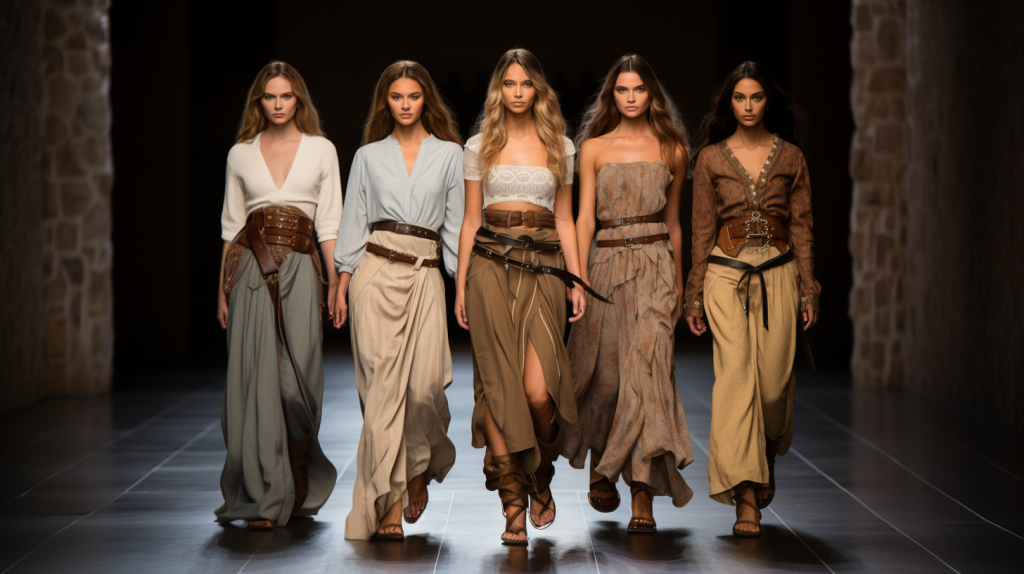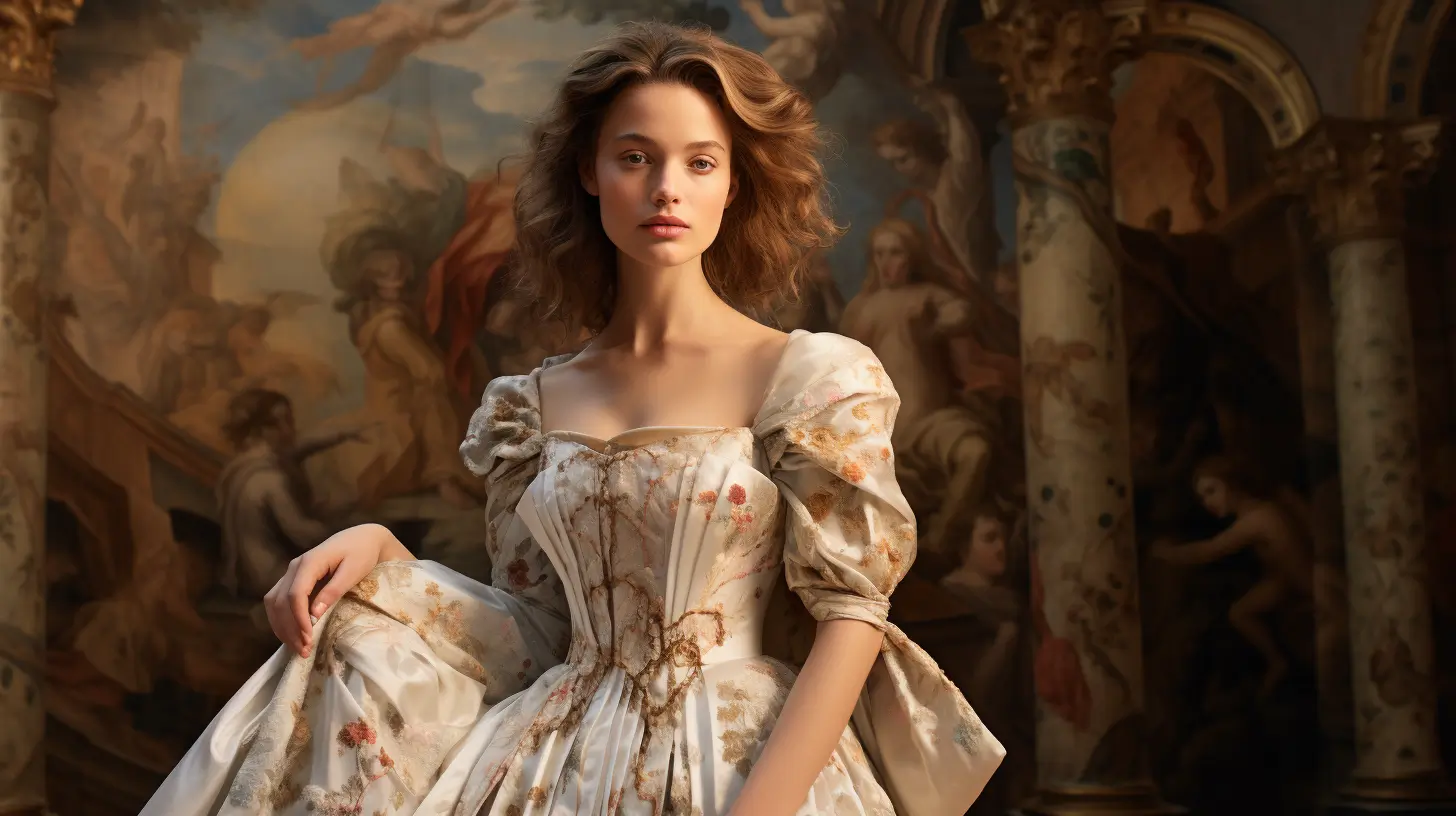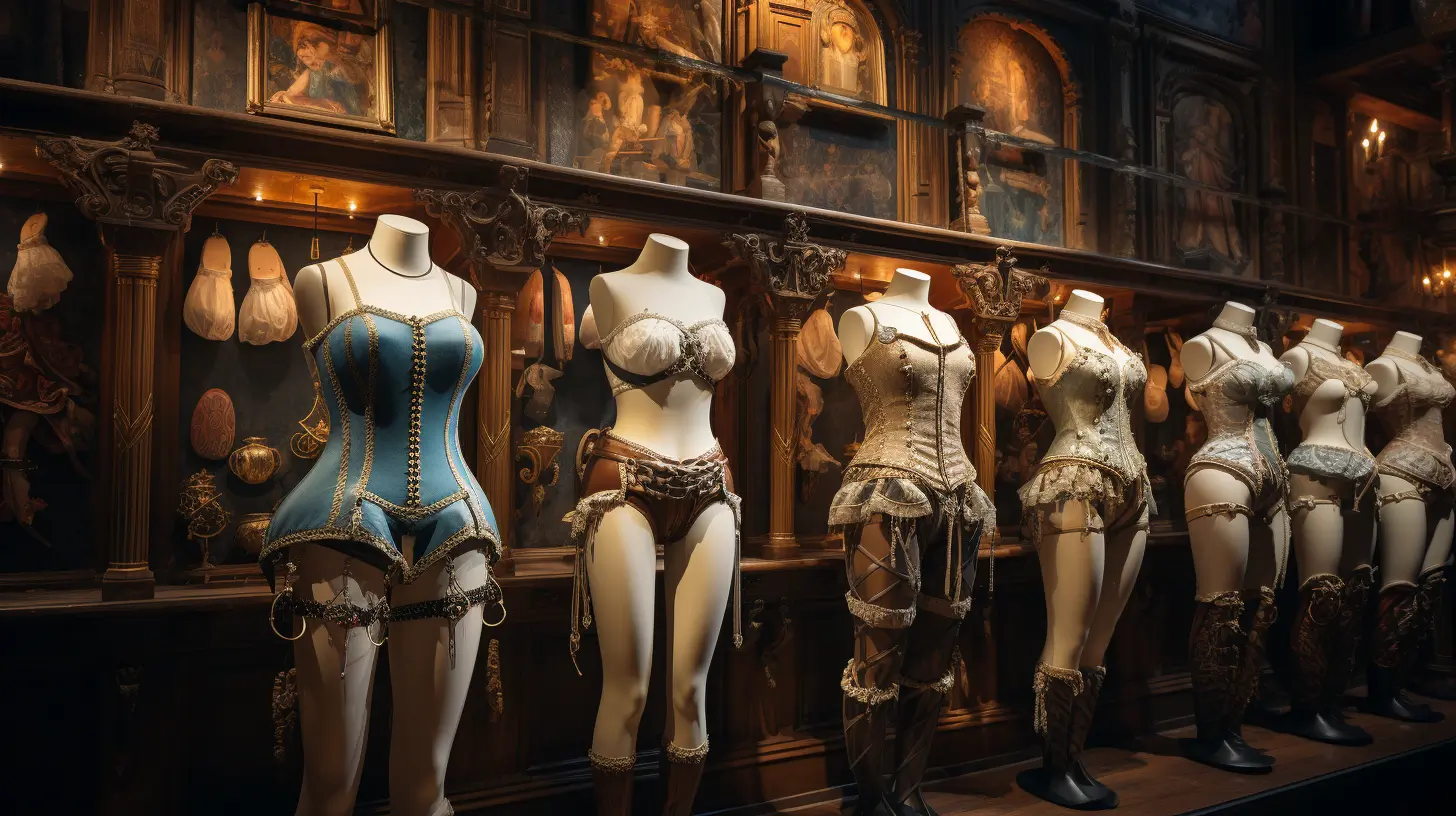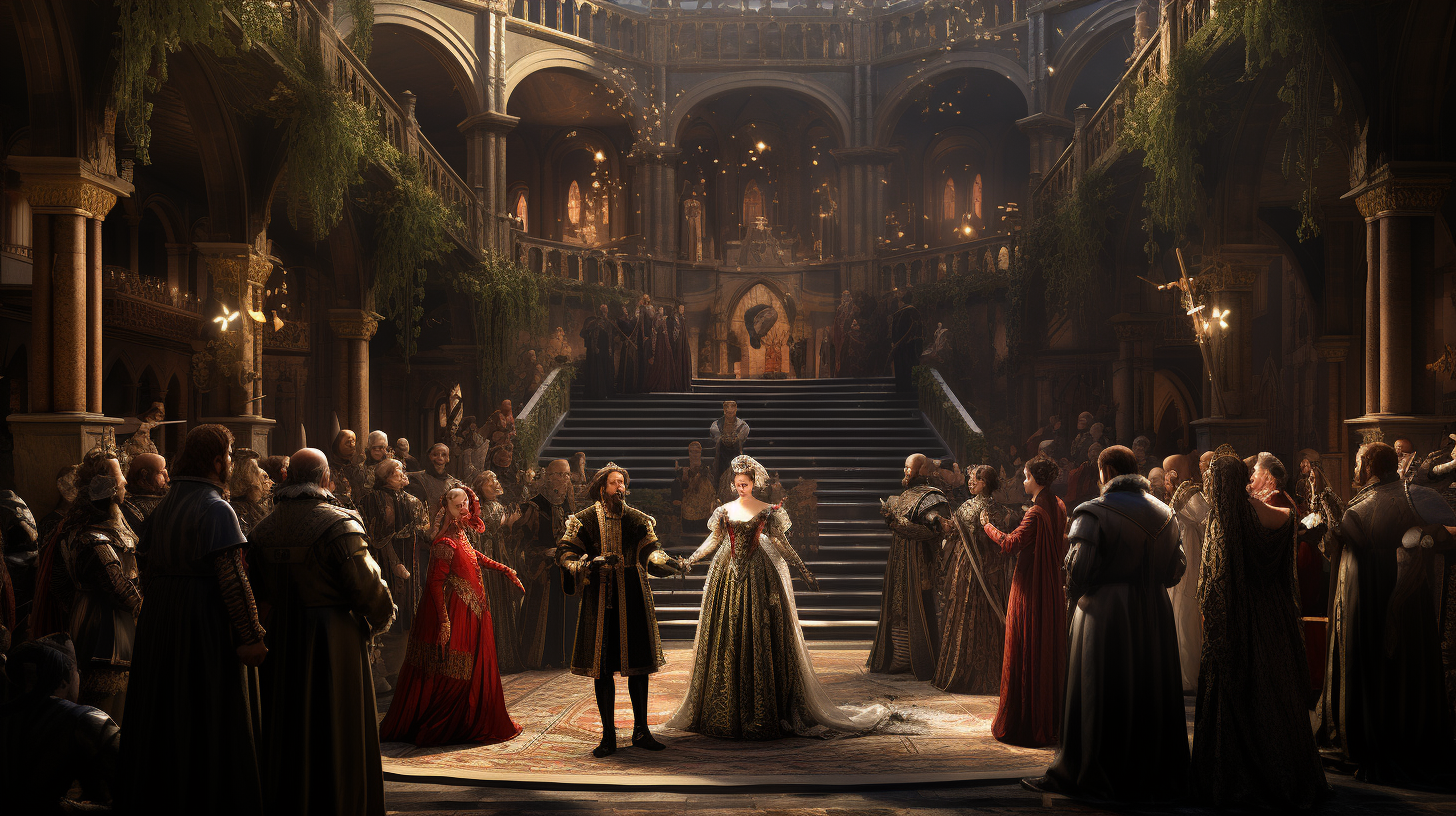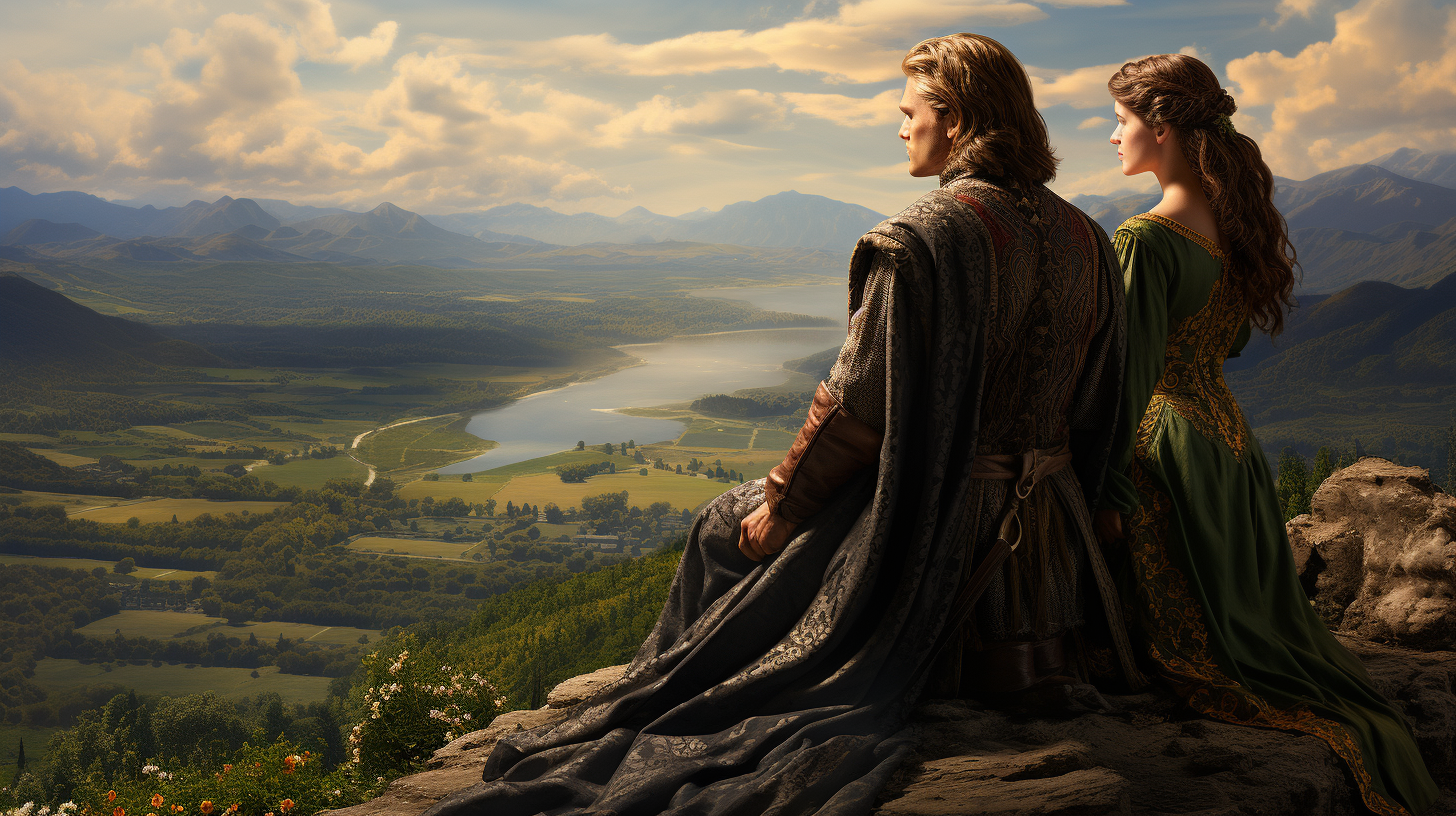
Emerald Threads: Unraveling the Rich Tapestry of Medieval Irish Fashion
The Enchantment of Medieval Irish Fashion
Capturing the Essence: Ireland’s Medieval Fashion Landscape In the emerald heart of Ireland, nestled within its rich history, lies a treasure trove of medieval fashion, as enchanting as the folklore that dances through its hills. Picture this: a world where every stitch and hue tells a tale, where clothing is more than mere fabric—it’s a chronicle of a people deeply rooted in tradition and yet, ever-evolving. Here, in the realm of medieval Ireland, fashion wasn’t just about trends; it was a vibrant language spoken through threads and colors, echoing the soul of the land.
The Blending of Traditions: How History Shaped Irish Fashion The story of Irish medieval fashion is a tapestry woven from various threads—local Celtic roots intertwining with influences from far-off lands. It’s a narrative of resilience and adaptability, as Ireland’s fashion scene absorbed and reinterpreted the styles brought by invaders and traders. From the simple, earth-toned tunics of the early medieval period to the more elaborate, European-inspired garments of the later years, Irish fashion was a dynamic expression of the island’s tumultuous history and its unyielding spirit.
Medieval Fashion Tales: Unearthing the Stories Behind the Styles Let’s embark on a journey back in time, to a world where fashion was not just about covering the body but about telling stories, asserting identities, and showcasing wealth or humility. This exploration will take us through the lanes of history, unveiling the mysteries of medieval Irish attire. We’ll discover how the simple act of choosing what to wear each day was, in fact, a complex decision influenced by social status, occupation, and even laws.
The Social Fabric: Clothing and Class in Medieval Ireland
Everyday Attire vs. Nobility Garments: A Contrast in Fabric and Form In medieval Ireland, clothing was a clear marker of one’s place in the social hierarchy. For the common folk, practicality reigned supreme—rough-spun wool and linen were the fabrics of choice, often in undyed or muted colors. The nobility, on the other hand, flaunted their status with finer fabrics, vibrant colors, and elaborate designs. Their attire was a visual testament to their wealth and power, often incorporating imported materials and intricate patterns that spoke of connections beyond the island’s shores.
Religious Influence on Fashion: The Monastic Touch in Irish Clothing Monastic life had a profound impact on medieval Irish fashion. Monks and nuns donned simple, unadorned habits, embodying a life of humility and devotion. However, the influence of religious attire extended beyond the walls of monasteries. The Church’s teachings often dictated the modesty and simplicity of laypeople’s clothing, subtly guiding the fashion trends of the era. This intersection of faith and fashion offers a fascinating glimpse into the deeply spiritual nature of Irish society.
Fashion as a Reflection of Social Change and Stability As Ireland navigated through periods of conflict and peace, its fashion landscape mirrored these changes. Laws like the Sumptuary Laws were introduced to maintain social distinctions through clothing. However, over time, as Ireland experienced social shifts and external influences, these laws became harder to enforce. The evolution of fashion in medieval Ireland is a story of both consistency and change, reflecting the island’s journey through times of turmoil and tranquility.
Celtic Influences and European Inspirations
The Celtic Knot: Weaving Local Traditions into Fashion Medieval Irish fashion was deeply rooted in its Celtic heritage. The iconic Celtic knot, renowned for its endless loops and intricate designs, found its way into the embroidery and patterns of Irish clothing. This wasn’t just decoration; it was a nod to a rich cultural legacy, a symbol of continuity and connection to the ancestors. These patterns, often seen on cloaks and tunics, were more than aesthetic choices—they were a bold declaration of Irish identity.

Beyond the Shores: How International Trends Influenced Irish Styles Ireland, though an island, was not isolated from the fashion currents sweeping across Europe. The arrival of the Vikings brought new materials and styles, introducing Ireland to the broader European fashion scene. Later, the Norman invasion further diversified the Irish wardrobe, adding elements of continental sophistication. This fusion of local and foreign influences created a unique fashion identity, showcasing Ireland’s ability to adapt and evolve while staying true to its roots.
The Impact of Politics and Trade on Fashion Evolution The shifting political landscape of medieval Ireland left its mark on fashion. Trade routes opened up, bringing in not just goods, but also new ideas and styles. As Ireland’s political alliances and conflicts evolved, so too did its fashion, absorbing and adapting elements from friends and foes alike. This subsection will explore how Ireland’s political and trade relations during the medieval period played a crucial role in shaping its fashion identity, turning clothing into a silent witness of the island’s geopolitical changes.
Colors of the Emerald Isle: Dyes and Fabrics
From Plant to Garment: The Process of Natural Dyeing The colors of medieval Irish clothing were derived from the natural world around them. Dyes were made from plants, berries, and even insects, each offering a unique hue that would then be transferred to wool and linen. This section will delve into the fascinating process of natural dyeing, revealing how common plants like woad for blue and madder for red were transformed into vibrant dyes. It’s a tale of skill and knowledge, where the very landscape of Ireland colored its fashion.
Fabric Choices: From Wool to Linen, the Materials That Shaped Irish Fashion Wool and linen were the cornerstones of medieval Irish clothing. Wool, readily available and warm, was ideal for the Irish climate, while linen, made from the flax plant, offered a lighter alternative for finer garments. This part of the blog will explore how these materials were produced and used, highlighting their significance in the daily life and fashion of medieval Ireland.
The Language of Color: Symbolism and Meaning in Dyes In medieval Irish fashion, colors were more than mere decoration; they were a language unto themselves. Different colors carried different meanings and could indicate everything from social status to political allegiance. This section will interpret the symbolic language of medieval Irish clothing, uncovering the hidden messages woven into the very fabric of society.
The Art of Embellishment: Patterns and Embroidery
Tales in Thread: Storytelling Through Embroidery and Patterns In medieval Ireland, embroidery was more than just a craft; it was a form of storytelling. Intricate patterns sewn into garments often told tales of legends, battles, and the natural world. This section will delve into how embroidery served as a narrative tool, with each stitch contributing to a larger story, often reflective of the wearer’s lineage, achievements, or regional identity.
The Influence of Trade and Travel on Decorative Techniques The evolution of embroidery and decorative techniques in medieval Irish fashion was significantly influenced by trade and travel. As Irish artisans encountered new cultures and materials, they incorporated these into their work, leading to an enriching blend of styles. This subsection will explore the various influences that shaped the artistry of medieval Irish clothing, highlighting the global connections of this seemingly insular world.
The Role of Embellishments in Denoting Status and Identity Embellishments in medieval Irish clothing were not merely decorative; they were emblematic of one’s status and identity. The intricacy of embroidery, the rarity of the pattern, and the quality of the materials used all spoke volumes about the wearer’s social standing. This part of the blog will examine how embellishments functioned as a visual language, communicating wealth, rank, and social roles within the intricate tapestry of medieval Irish society.
The Art of Embellishment: Patterns and Embroidery
Tales in Thread: Storytelling Through Embroidery and Patterns In medieval Ireland, embroidery was more than just a craft; it was a form of storytelling. Intricate patterns sewn into garments often told tales of legends, battles, and the natural world. This section will delve into how embroidery served as a narrative tool, with each stitch contributing to a larger story, often reflective of the wearer’s lineage, achievements, or regional identity.
The Influence of Trade and Travel on Decorative Techniques The evolution of embroidery and decorative techniques in medieval Irish fashion was significantly influenced by trade and travel. As Irish artisans encountered new cultures and materials, they incorporated these into their work, leading to an enriching blend of styles. This subsection will explore the various influences that shaped the artistry of medieval Irish clothing, highlighting the global connections of this seemingly insular world.
The Role of Embellishments in Denoting Status and Identity Embellishments in medieval Irish clothing were not merely decorative; they were emblematic of one’s status and identity. The intricacy of embroidery, the rarity of the pattern, and the quality of the materials used all spoke volumes about the wearer’s social standing. This part of the blog will examine how embellishments functioned as a visual language, communicating wealth, rank, and social roles within the intricate tapestry of medieval Irish society.
The Lasting Legacy of Irish Medieval Fashion
Echoes in Modern Design: Medieval Irish Fashion’s Influence Today The echoes of medieval Irish fashion are still felt in today’s design world. Contemporary fashion designers often draw inspiration from the rich textures, vibrant colors, and intricate patterns of Ireland’s past. This section will highlight how elements of medieval Irish fashion are being reimagined in modern clothing, demonstrating the timeless appeal and enduring influence of this historical style.
Preserving the Past: The Importance of Historical Fashion in Understanding Culture The preservation and study of medieval Irish fashion offer invaluable insights into Ireland’s history and cultural heritage. This subsection will delve into the efforts made to conserve and exhibit historical garments, emphasizing the role of fashion as a crucial link to understanding and appreciating the richness of Irish heritage.
The Timeless Appeal of Medieval Irish Fashion
Medieval Irish fashion stands as a testament to the island’s rich history and cultural diversity. Its enduring appeal lies not just in its beauty or craftsmanship, but in its ability to tell the story of a people and a place, bridging the past and present. This final part of the blog will reflect on the timeless beauty and complexity of Ireland’s historical attire, and how it continues to inspire and captivate those who encounter it.
